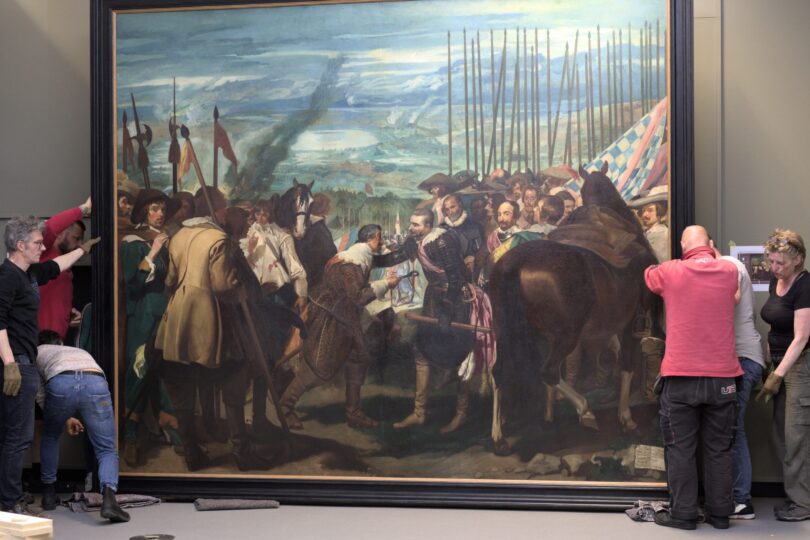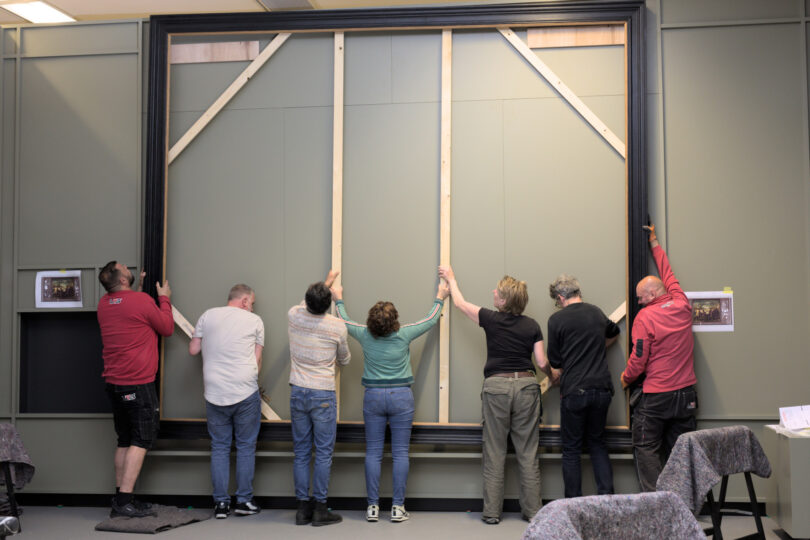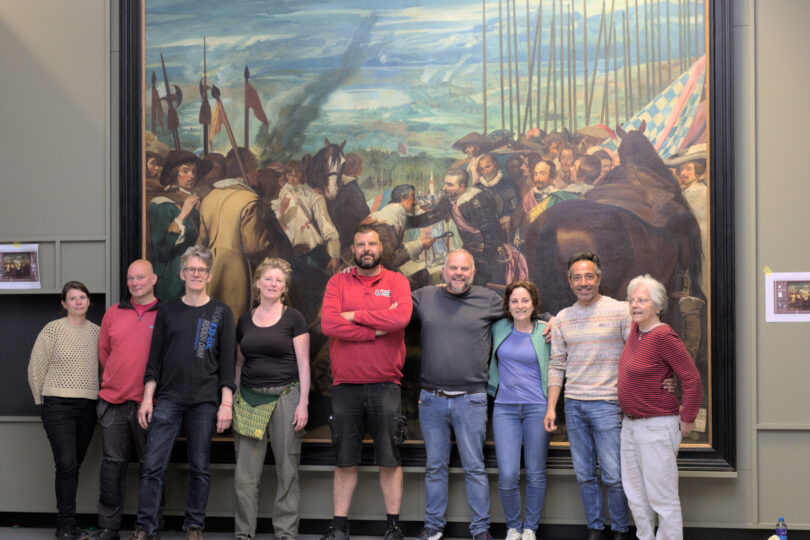LAS LANZAS
As part of the Spain Projects, Witte Rook has invited the artist duo Iratxe Jaio and Klaas van Gorkum for a residency project. Their working period and artistic research delve deeper into the shared Spanish and Dutch history—particularly that of Breda and Madrid—by placing it in a contemporary context. The starting point for the project Las Lanzas is the presence of various copies of the famous painting La rendición de Breda by Diego Velázquez in Breda, which depicts the surrender of Breda during the Eighty Years’ War with Spain.
The Original
The painting La rendición de Breda depicts the surrender of Breda and is housed in the Prado Museum in Madrid. It is a significant work in Velázquez’s oeuvre and a prominent part of the Prado’s collection, permanently on display. When looking at the composition itself, the painting’s political role is evident: it portrays an honourable exchange between rulers, reinforced by a symbolic gesture—the handing over of Breda’s city key. The arrangement is highly theatrical, with no traces of battle, as the work is not based on an actual historical account but rather on a stage play. The painting is considered a key work in the canon of Spanish visual art, glorifying Spanish supremacy at a time when it was already in decline.
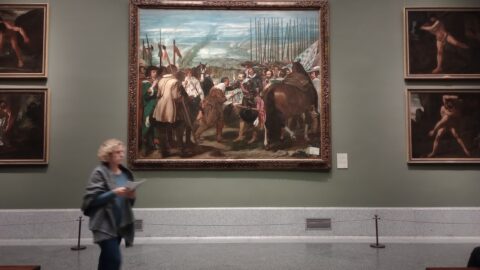
THE MODERN CONTEXT
The copy hanging in Breda’s City Hall was created by Fernando Coll (1931) and purchased in honour of Breda’s mayor, Van Sonsbeek. It is prominently displayed in the hall and often serves as a backdrop for photographs of special occasions, without much regard for the painting’s actual meaning. Many residents no longer realise that it depicts a defeat.
The other copy, an older version by Kees Maks (1903), was previously exhibited in the Grote Kerk (Grand Church) and the Breda’s Museum. When the Stedelijk Museum Breda opened, the painting was placed in the museum café. However, following a recent renovation and a shift in focus within the historical exhibition, it has now returned to the main gallery. Once again, a certain glorification of past grandeur comes into play, reinforced by the renewed attention to Nassau history in the Royal Roots programme. These aspects shape the social engagement with the painting and the perception of authenticity.
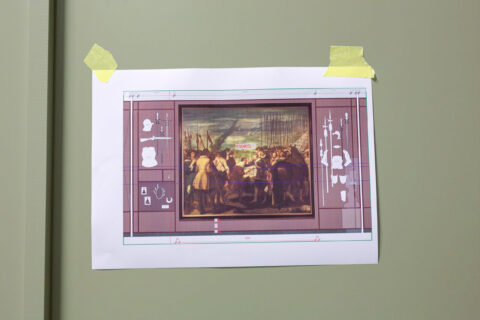
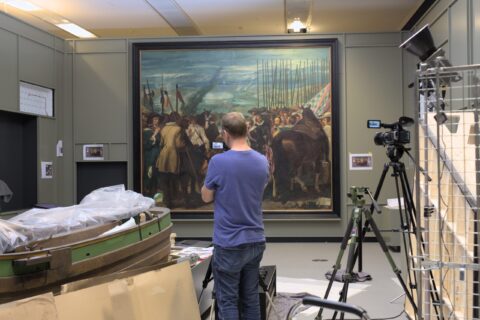
During a working period starting in September 2023, artists Iratxe Jaio and Klaas van Gorkum will conduct comparative research into the role each copy plays as a cultural artefact. Their approach is based on the idea that context is crucial in determining a work of art’s meaning. Although the images appear nearly identical, they serve vastly different functions. The original painting, housed in the Prado Museum in Madrid, celebrates the Spanish victory during the Siege of Breda. In contrast, the copy in the Stedelijk Museum Breda highlights the city’s grandeur in relation to the House of Orange-Nassau, while the version in City Hall serves as a popular backdrop for countless wedding photos. By engaging with the various communities that have built a relationship with these paintings, new interpretations emerge.
Through research, video documentation, and staged interventions, the artists aim to explore the connections between the different copies, with a particular focus on the events and interactions that take place around them. What recurring patterns can be identified, and in what ways do they differ? What can this reveal about the relationship between contemporary audiences and art, or history itself?
The final presentation of this project will take place in June and July 2025 at the StadsGalerij in Breda. In 2024, part of the project, Getting Married at Las Lanzas, was presented during the Breda Month of History, and Iratxe Jaio gave a lecture on the research at the Stedelijk Museum Breda.
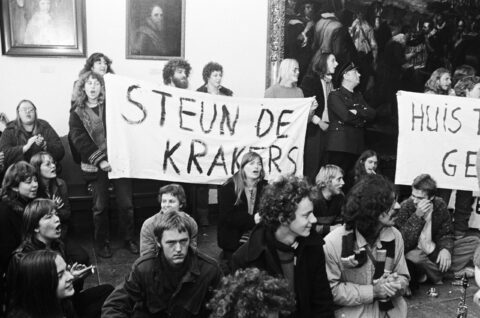
Steun de krakers, 1979. In the background, the painting by Fernando Coll at the Breda City Hall. Photo from the city archives.
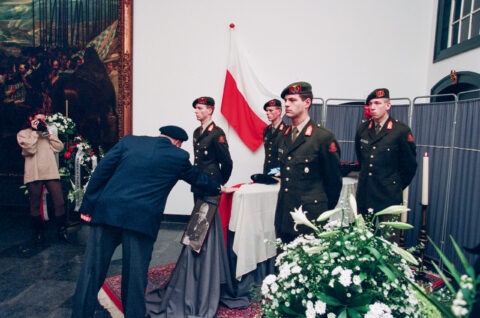
Breda pays a final tribute to Polish General Maczek during his lying-in-state at the City Hall / BN De Stem, Johan van Gurp. City Hall Breda, 1975 / Collection of Breda City Archives.
About IRATXE JAIO and KLAAS VAN GORKUM
Iratxe Jaio (Spain, 1976) and Klaas van Gorkum (Netherlands, 1975), based in Rotterdam, have been working together as an artist duo since 2001. A traditional notion of authorship is hardly applicable to their projects. They explore the social function of existing objects and documents by reproducing, altering, or simply presenting them in a new context. A central theme in their work is the relationship between the artist and society. Their focus extends beyond the impact of social developments on artistic practice to examine the active role that artists themselves can play within these dynamics.
In recent years, the duo has worked extensively in Spain. With their distinct cultural backgrounds, they are accustomed to navigating between these two worlds and translating between them.
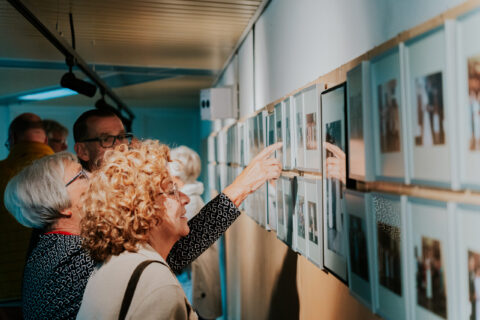
Presentation Trouwen bij Las Lanzas, Nieuwe Veste Breda during the Bredase maand van de Geschiedenis 2024. Photo Joost van der Velde.
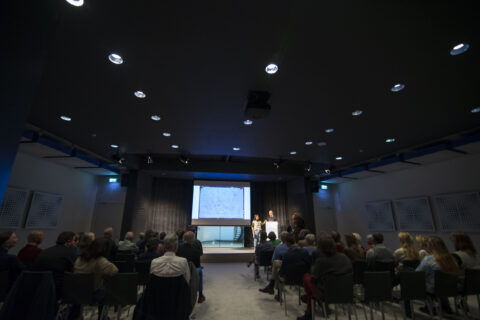
Klaas and Iratxe gave a lecture on the Las Lanzas project on October 4, 2024, at the Stedelijk Museum Breda.
The project Las Lanzas has been made possible by the Municipality of Breda, the Mondriaan Fund, and the Dutch Embassy in Madrid, with the support of Stedelijk Museum Breda and the Prado Museum in Madrid.

